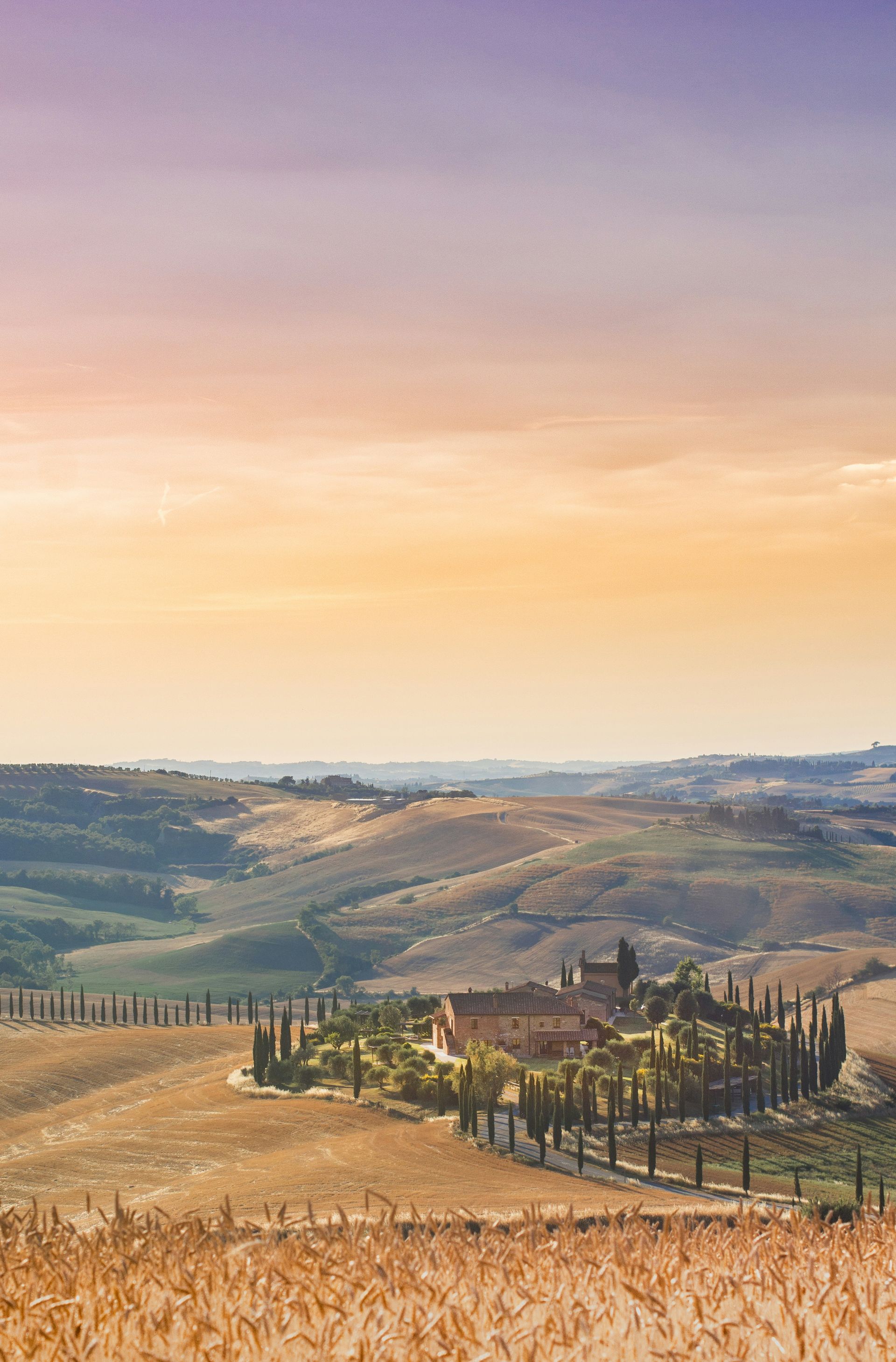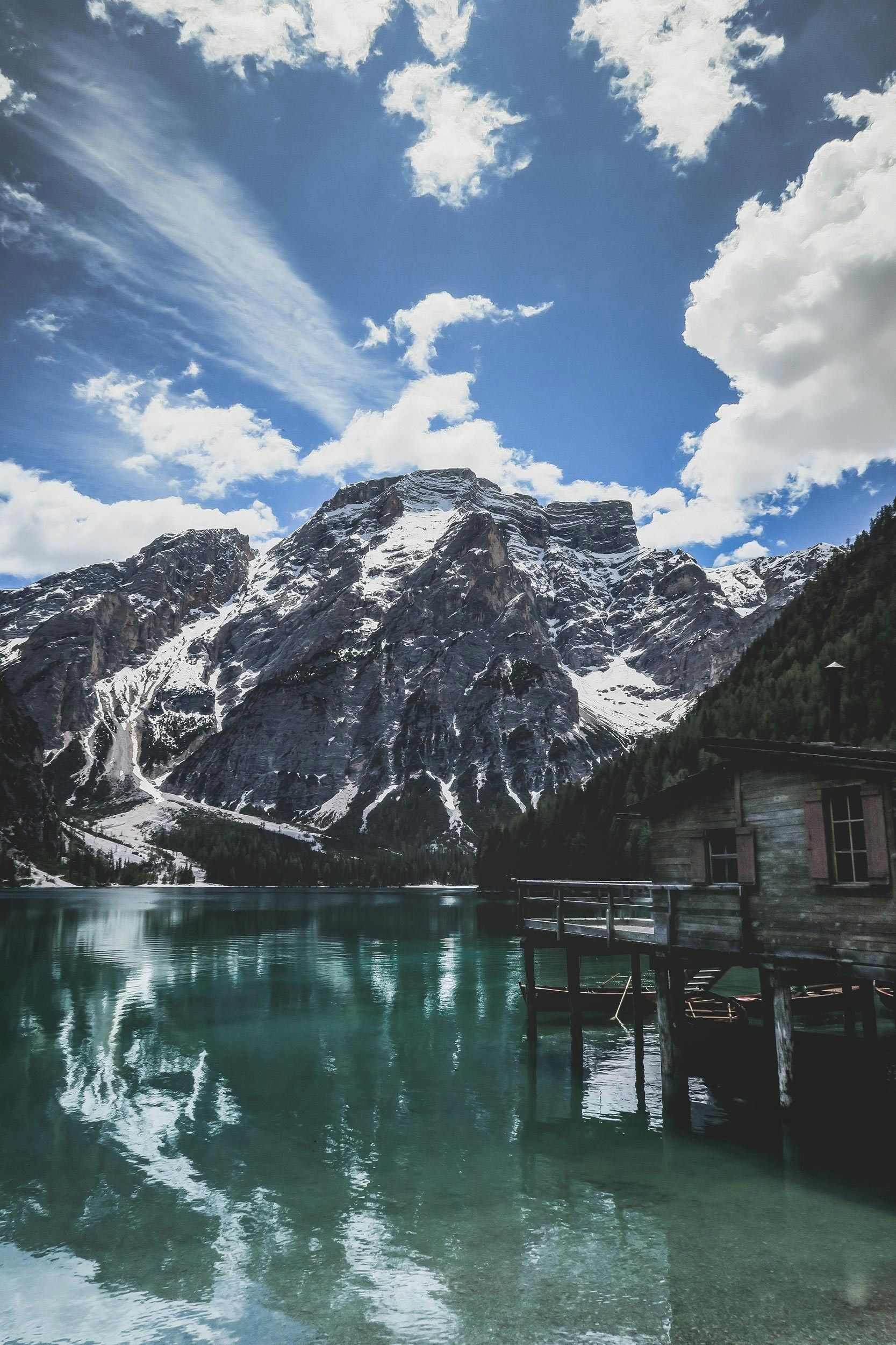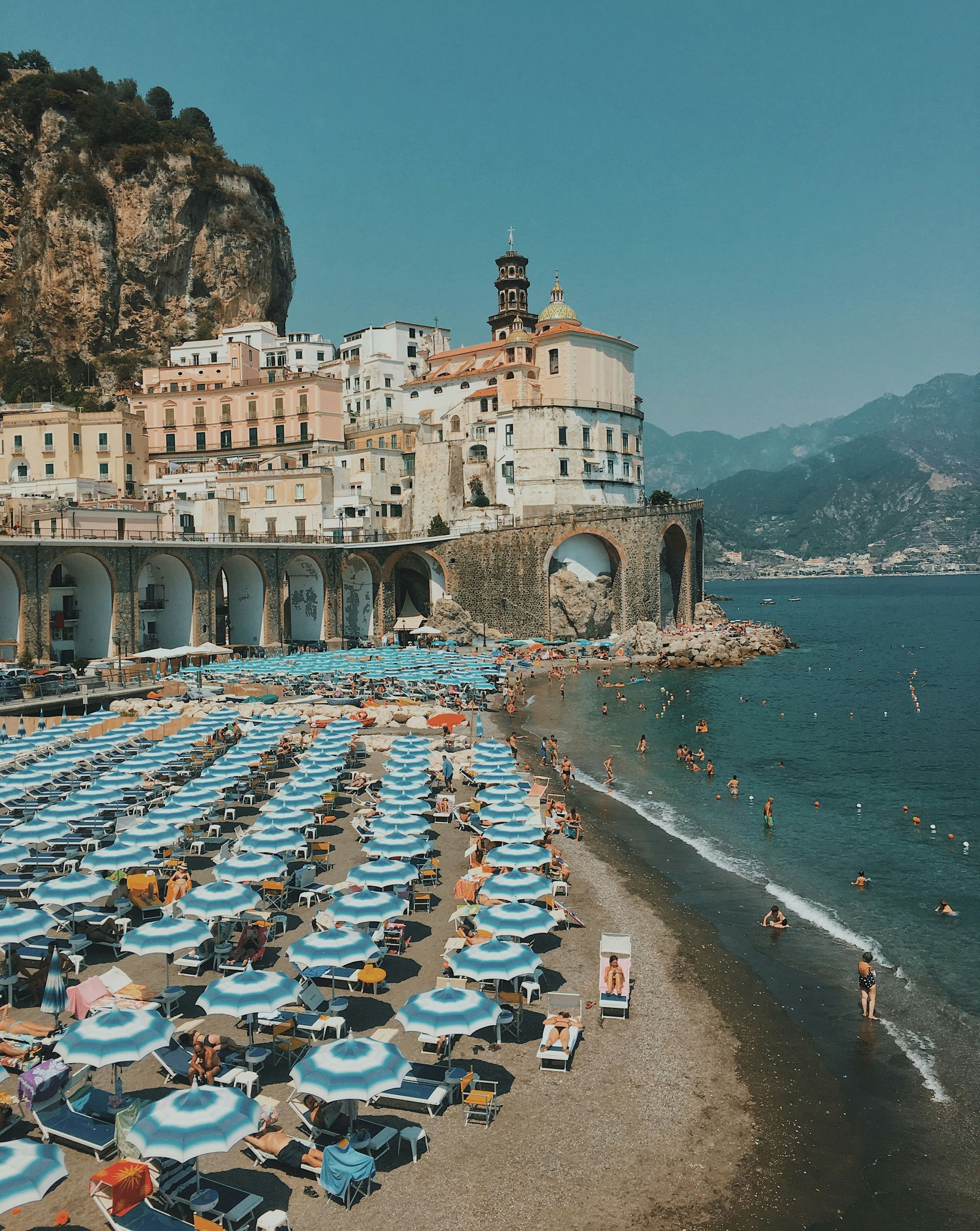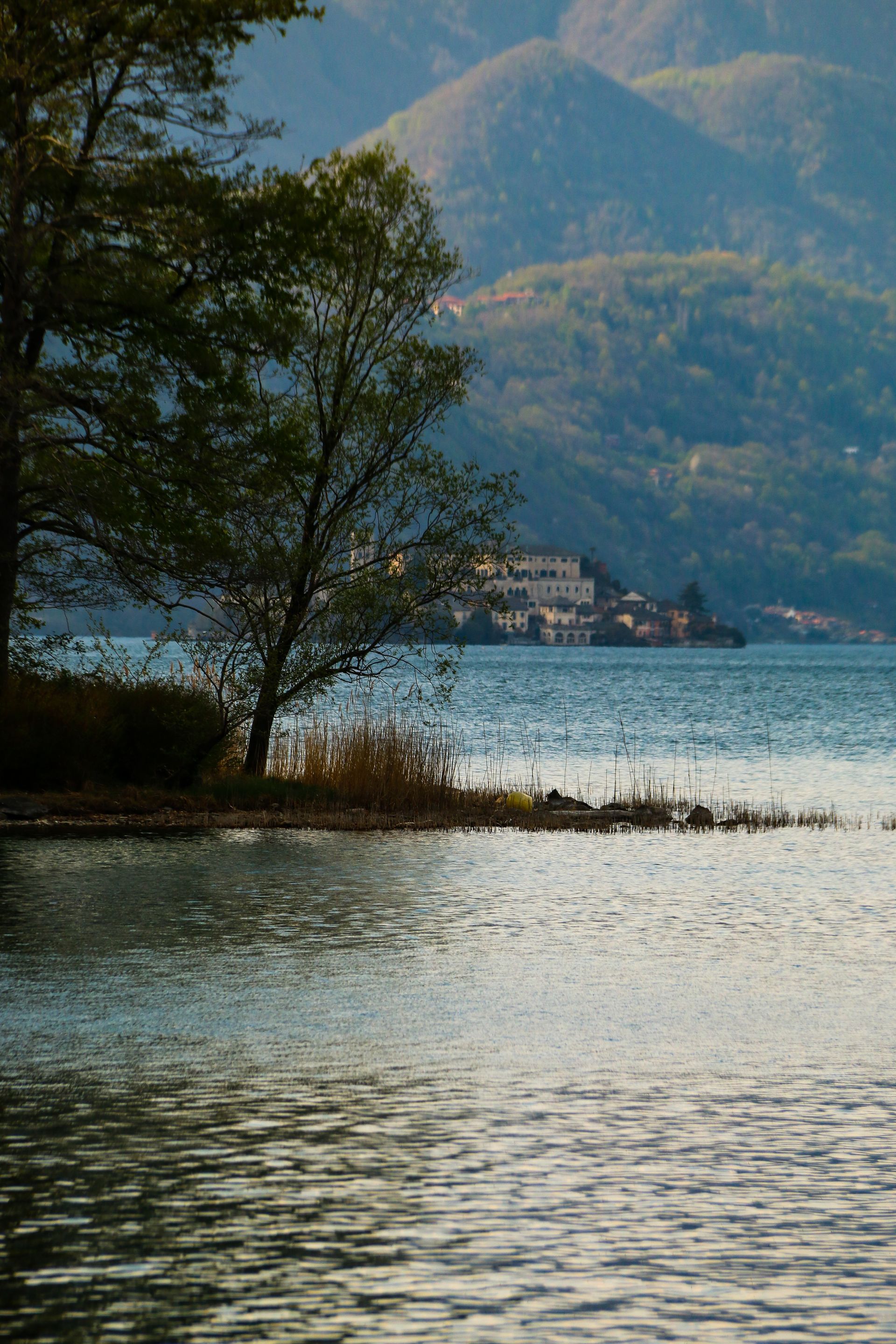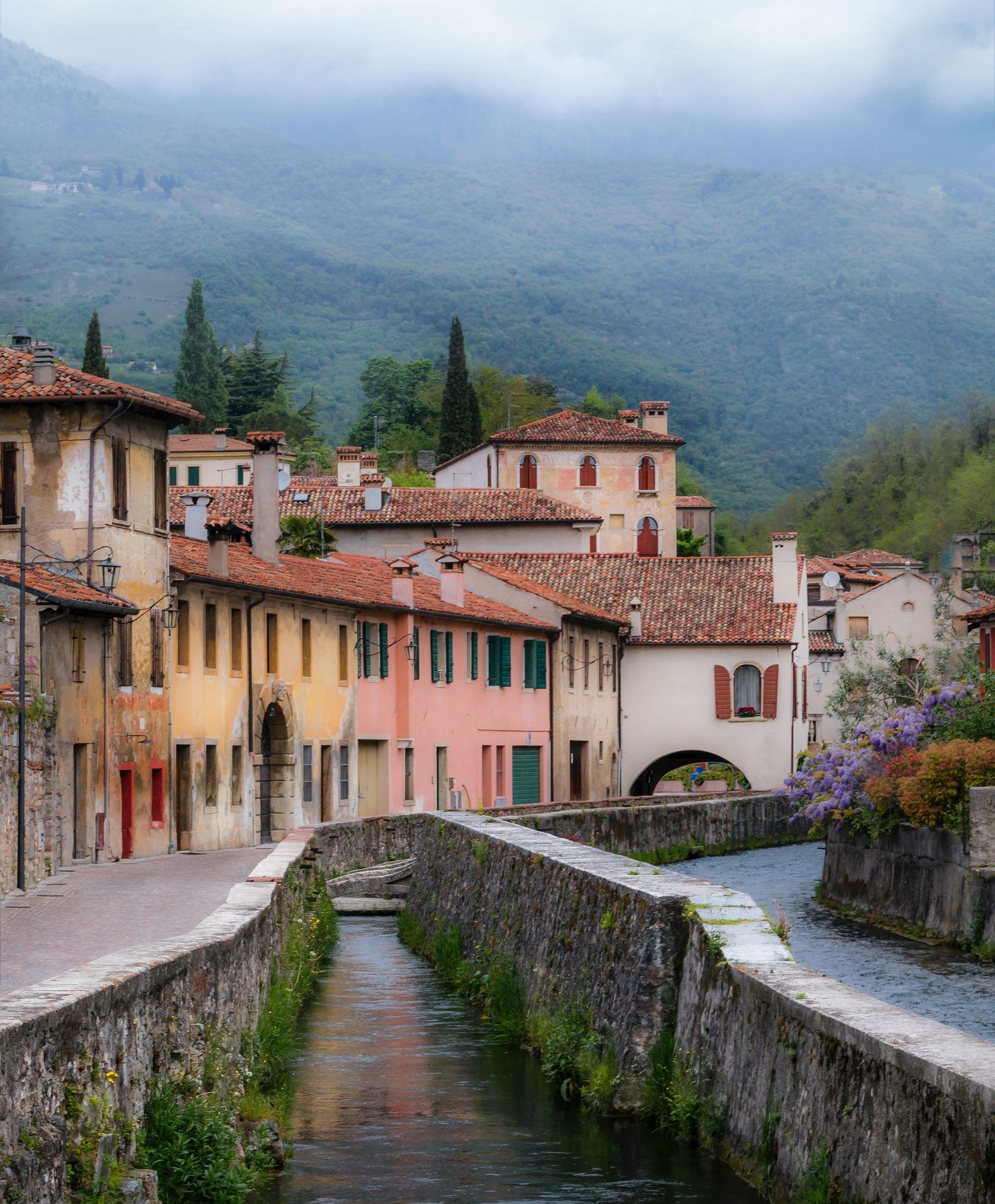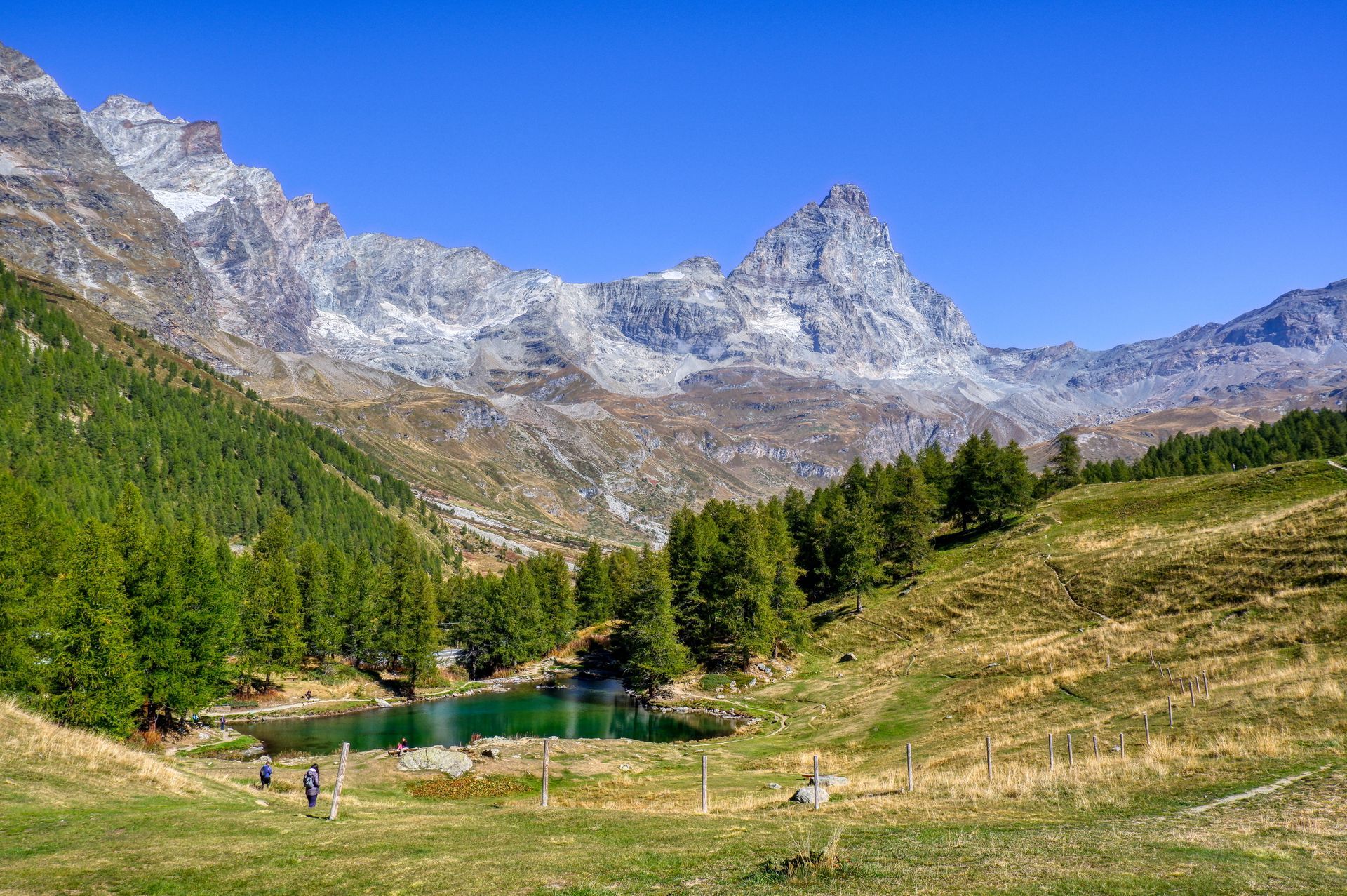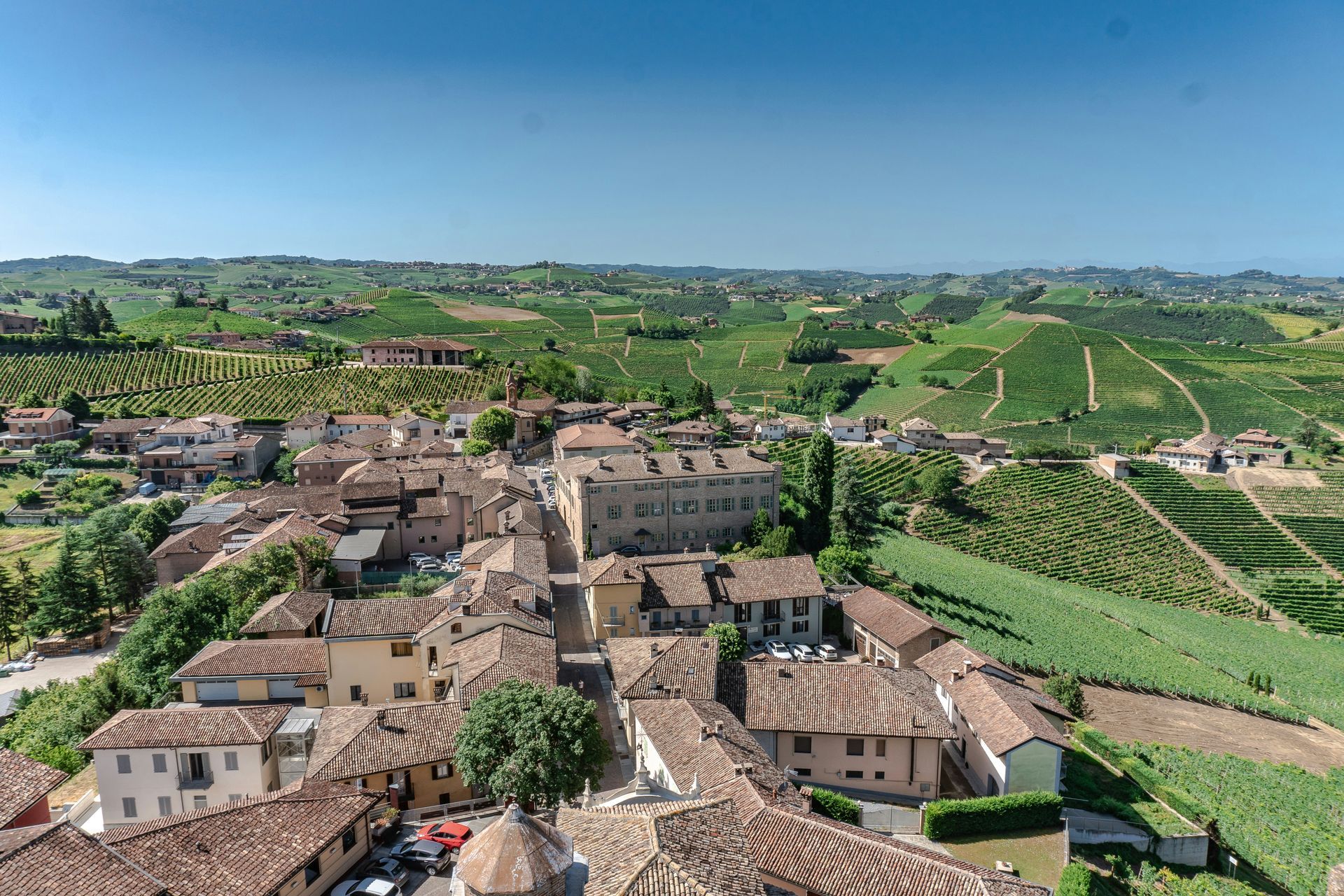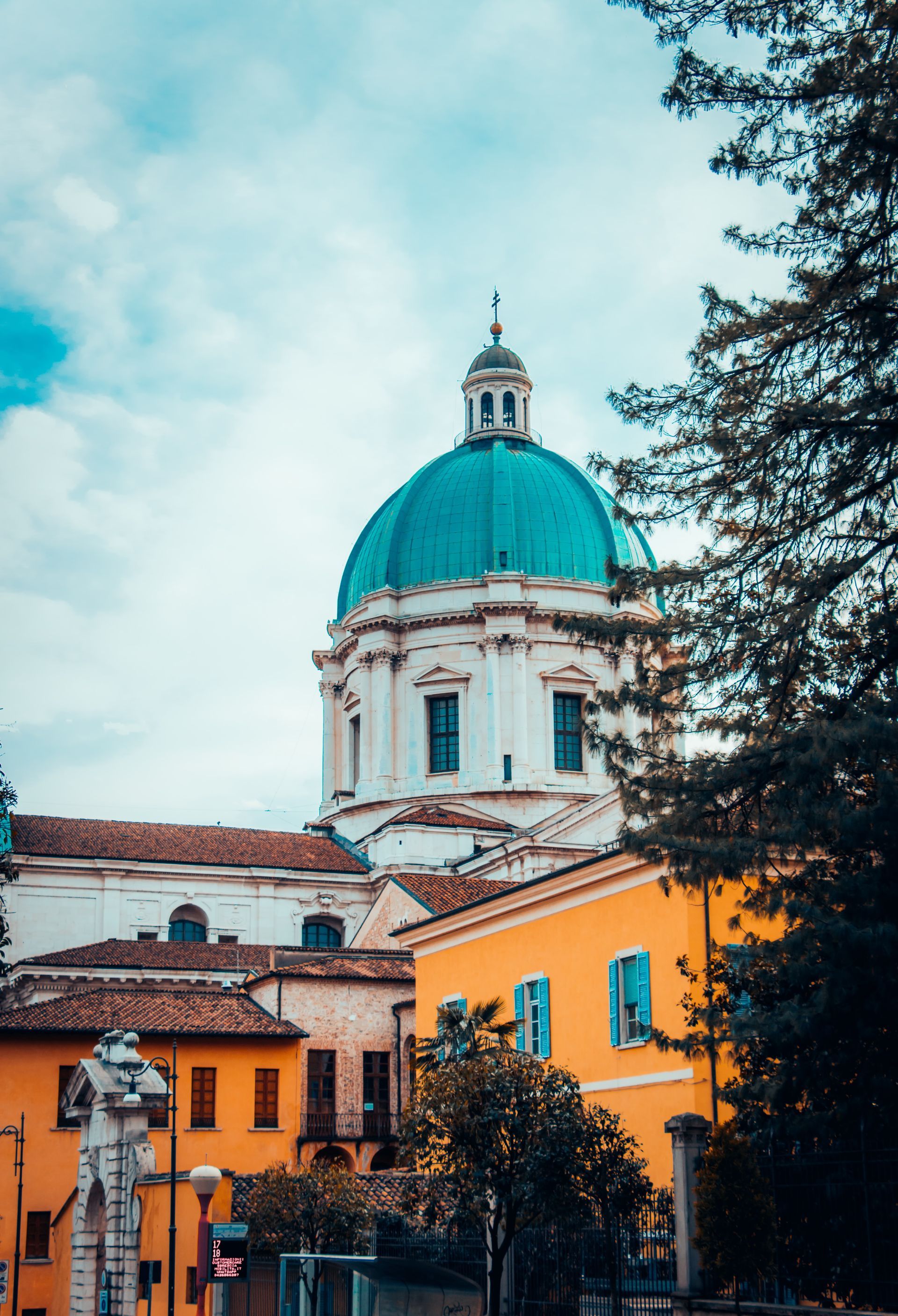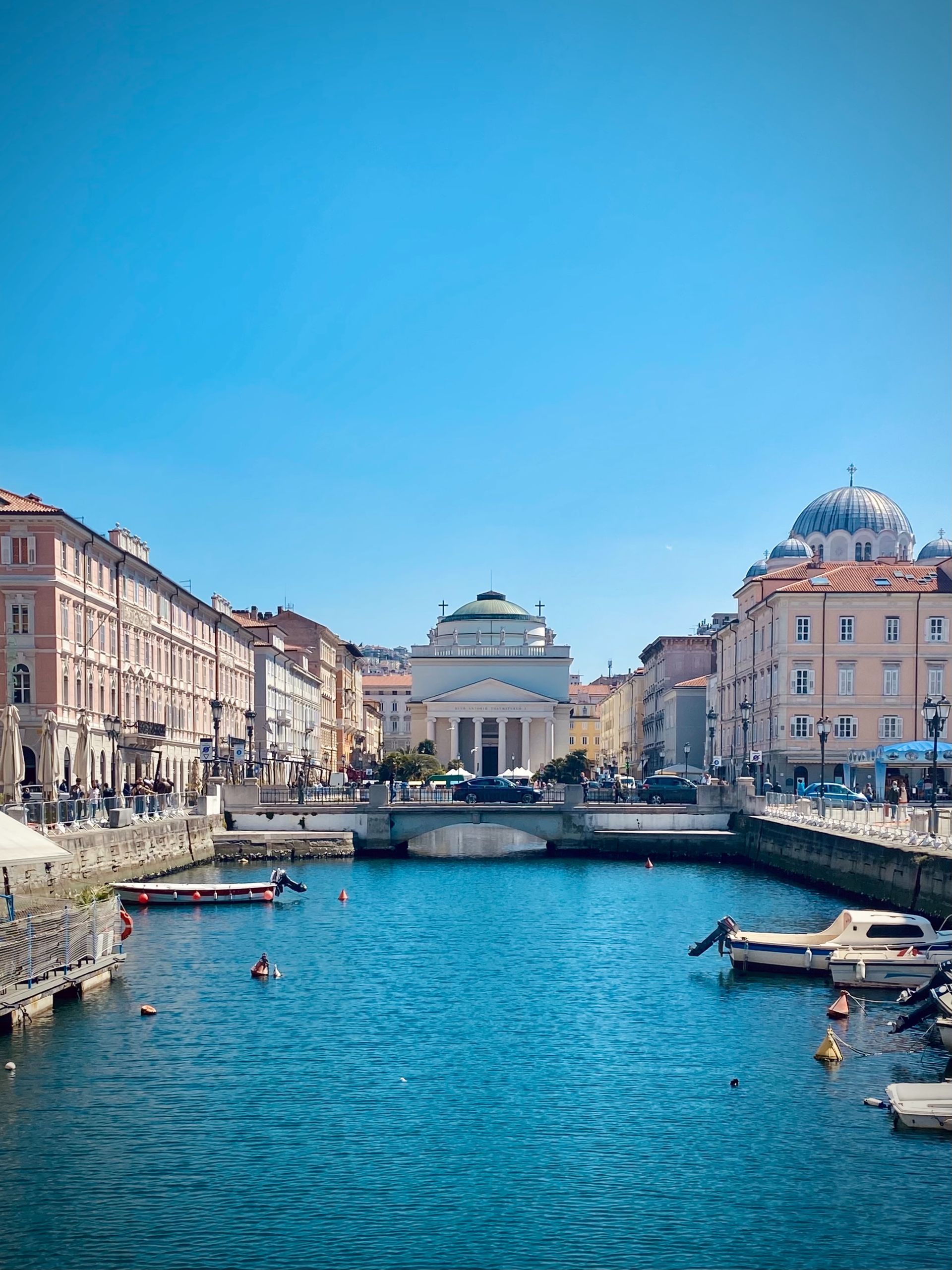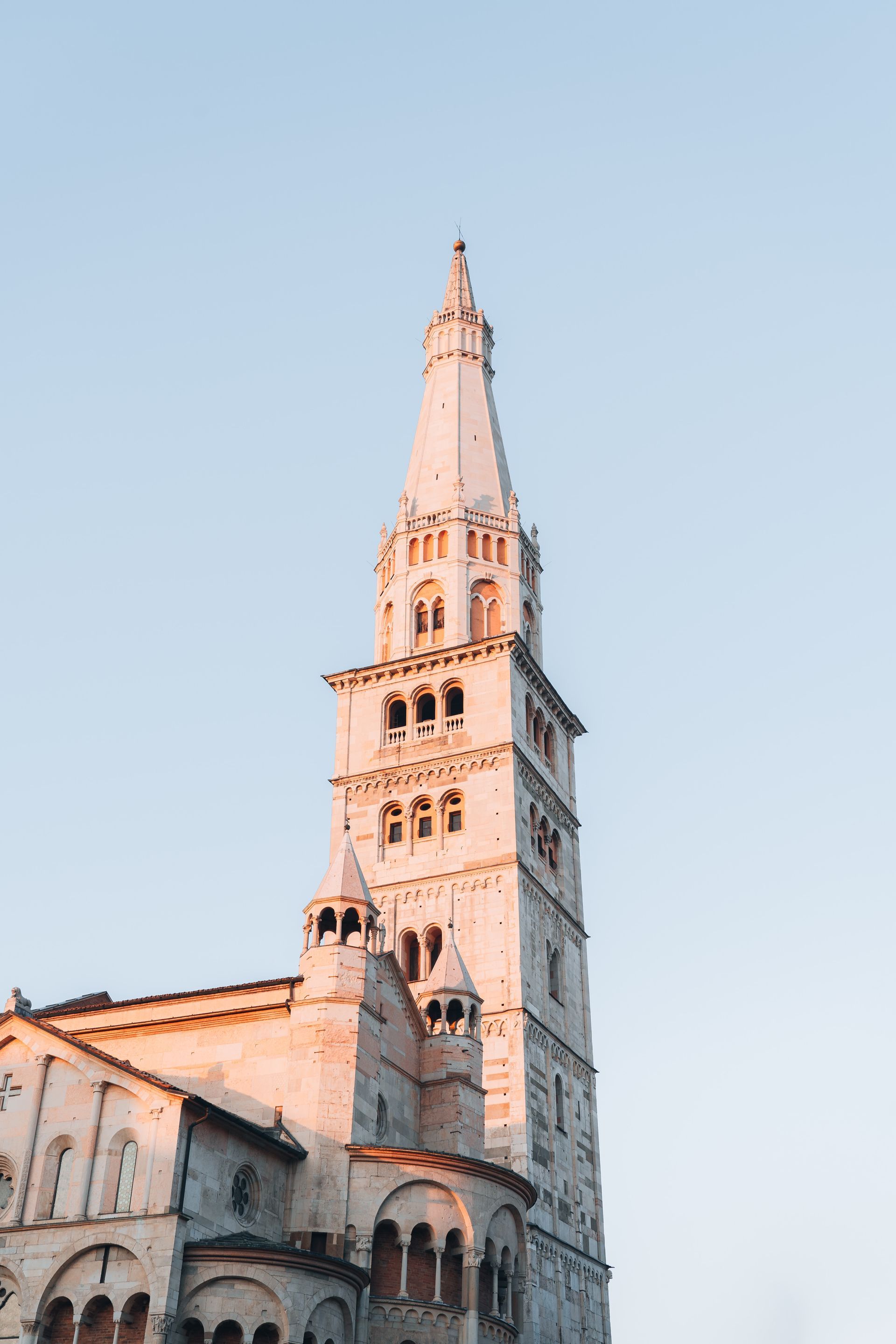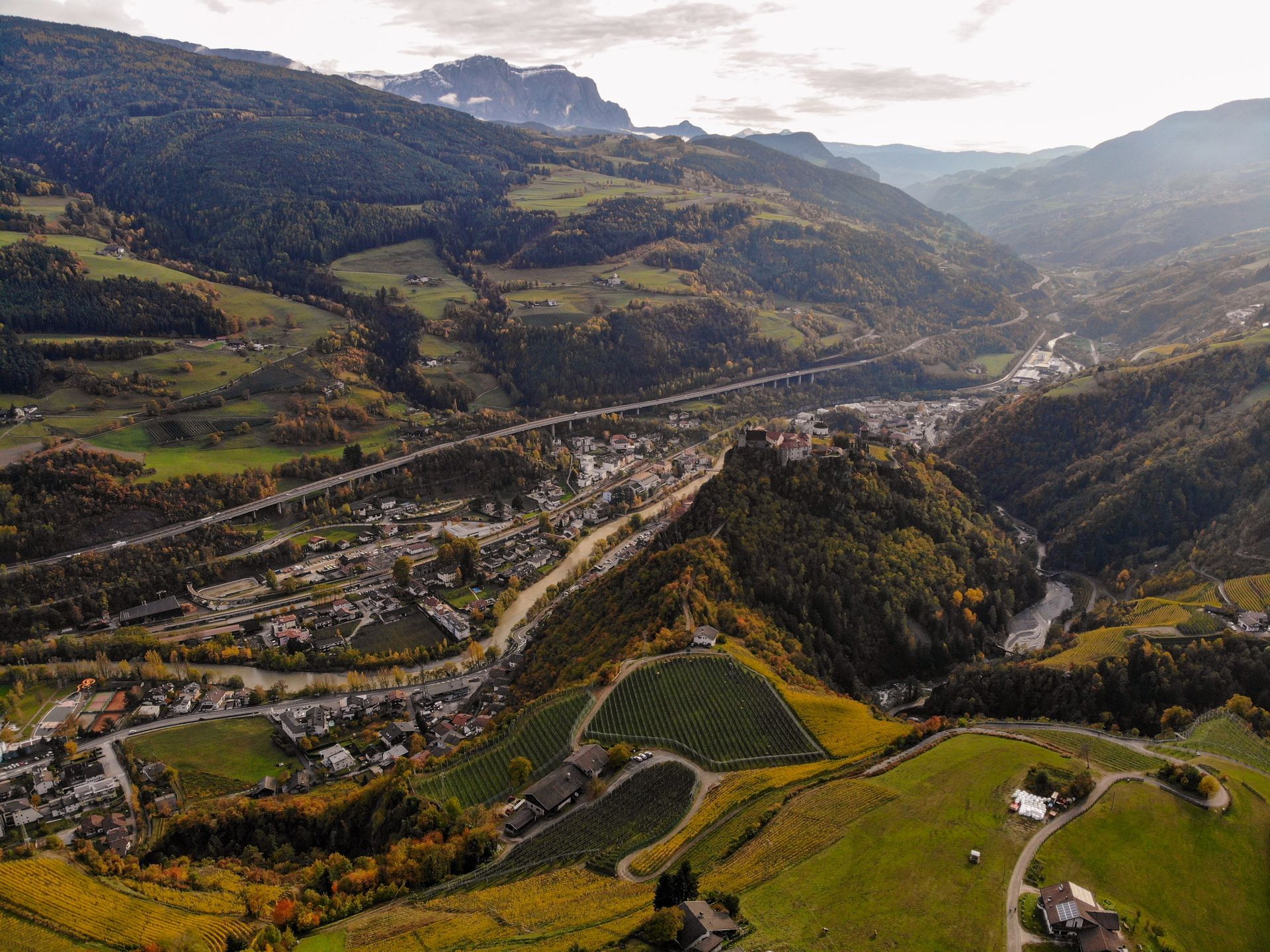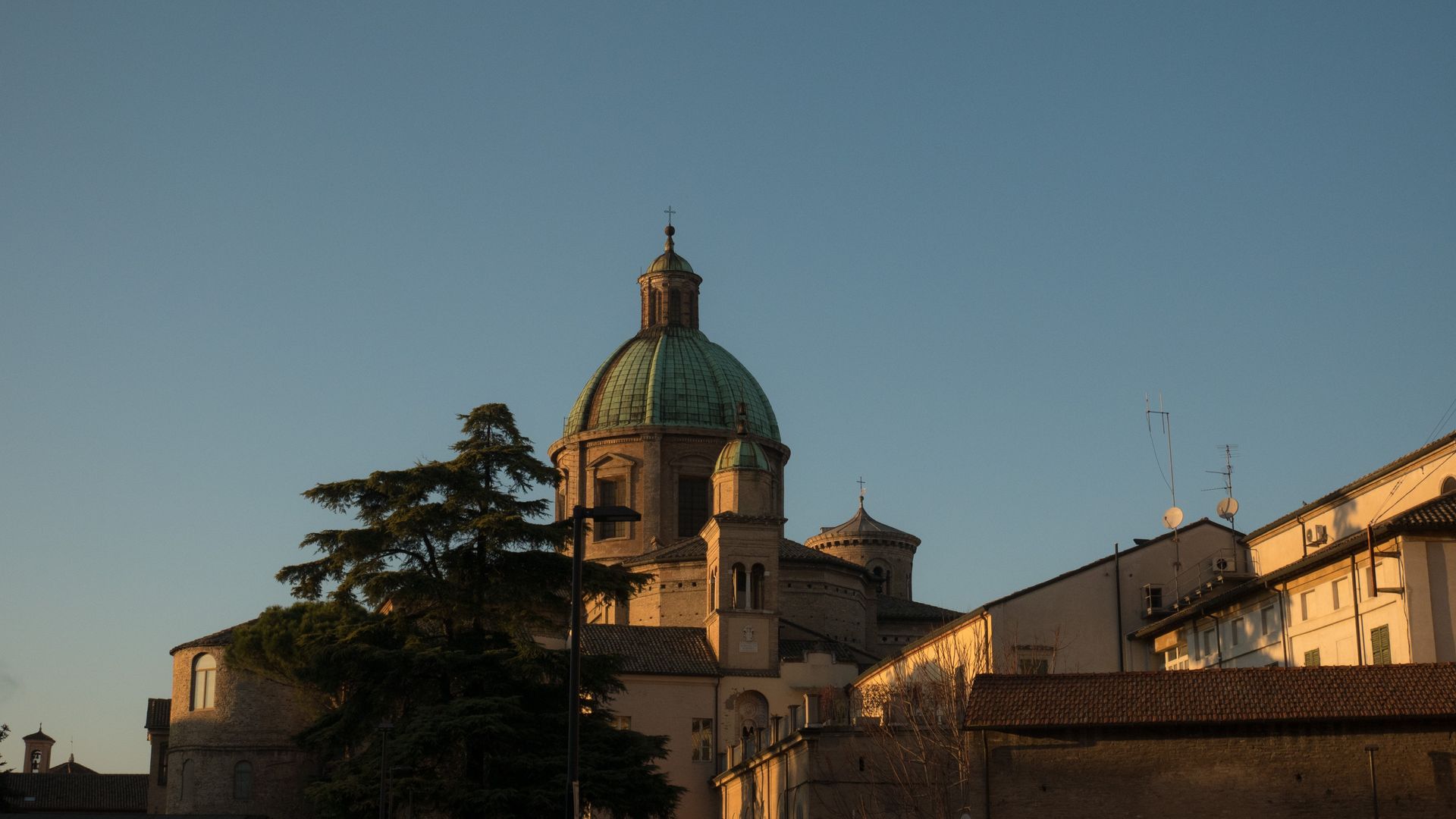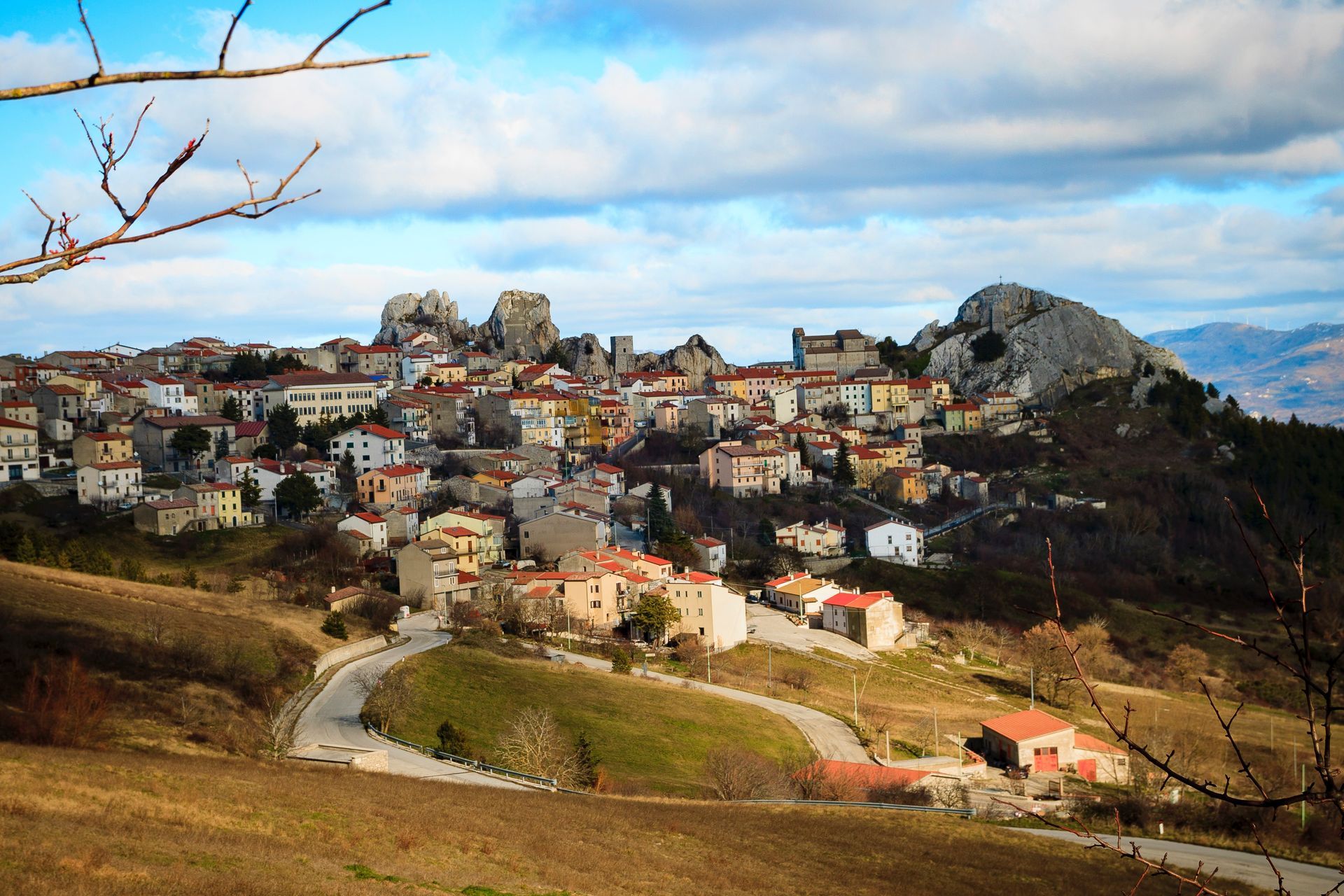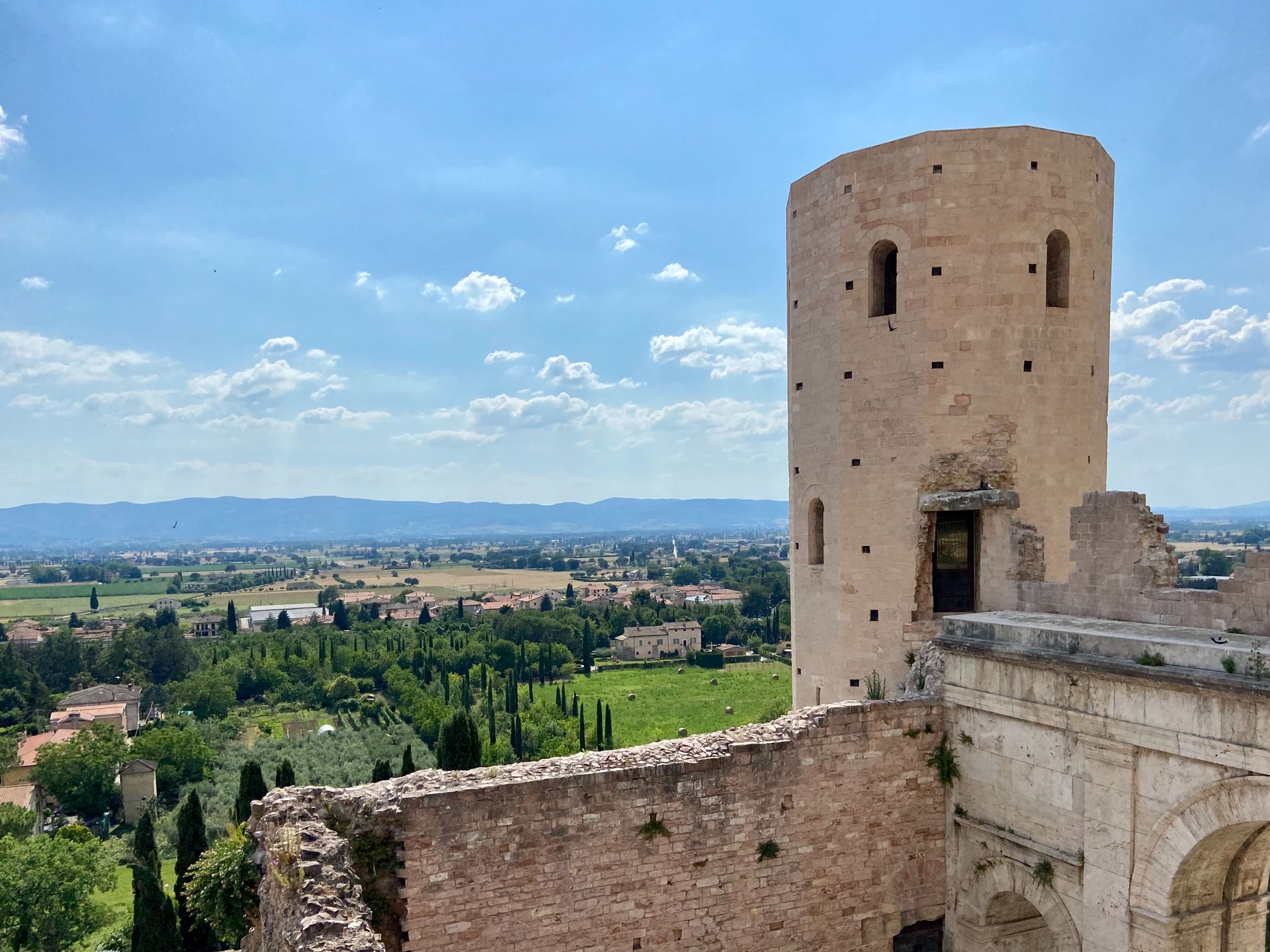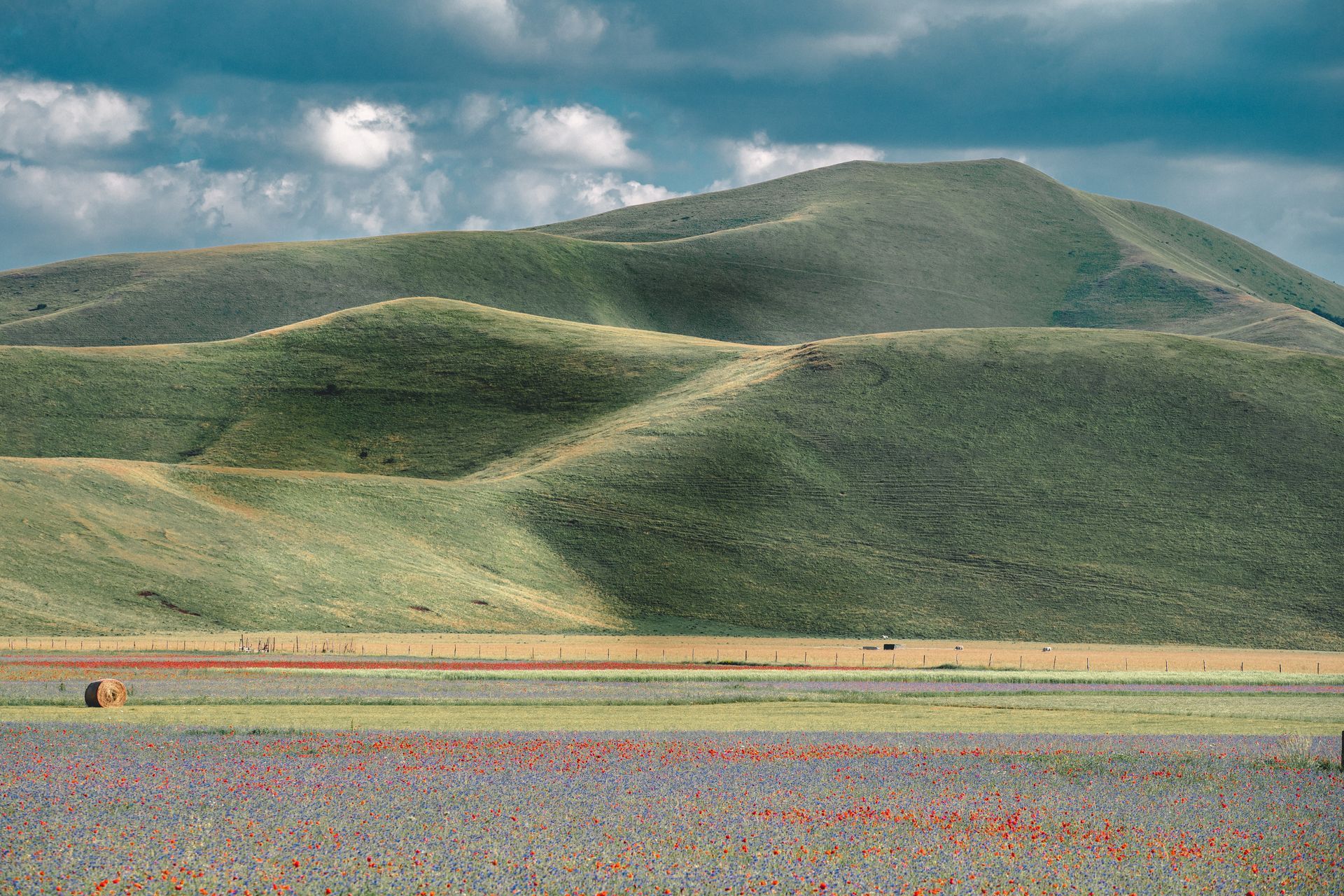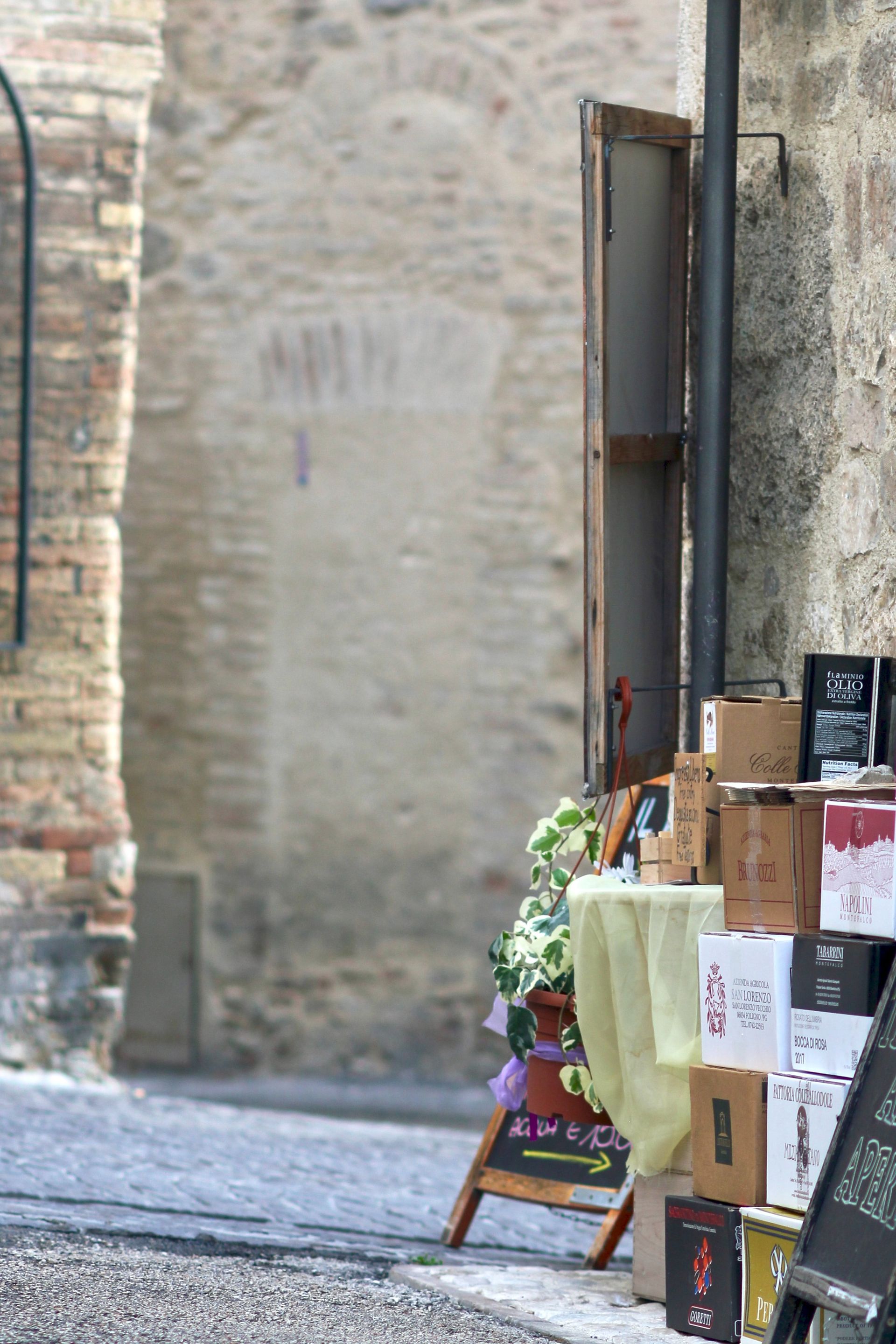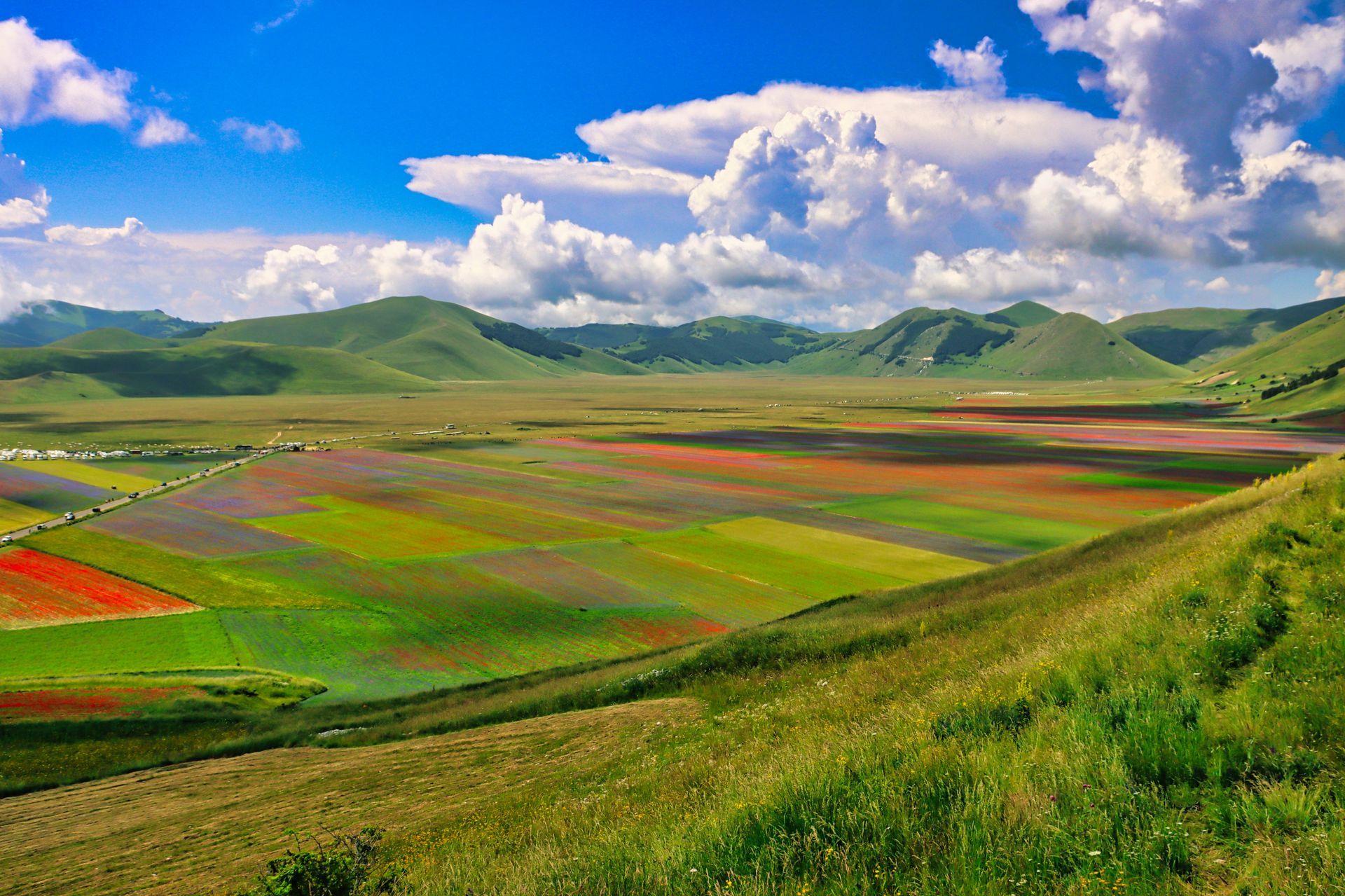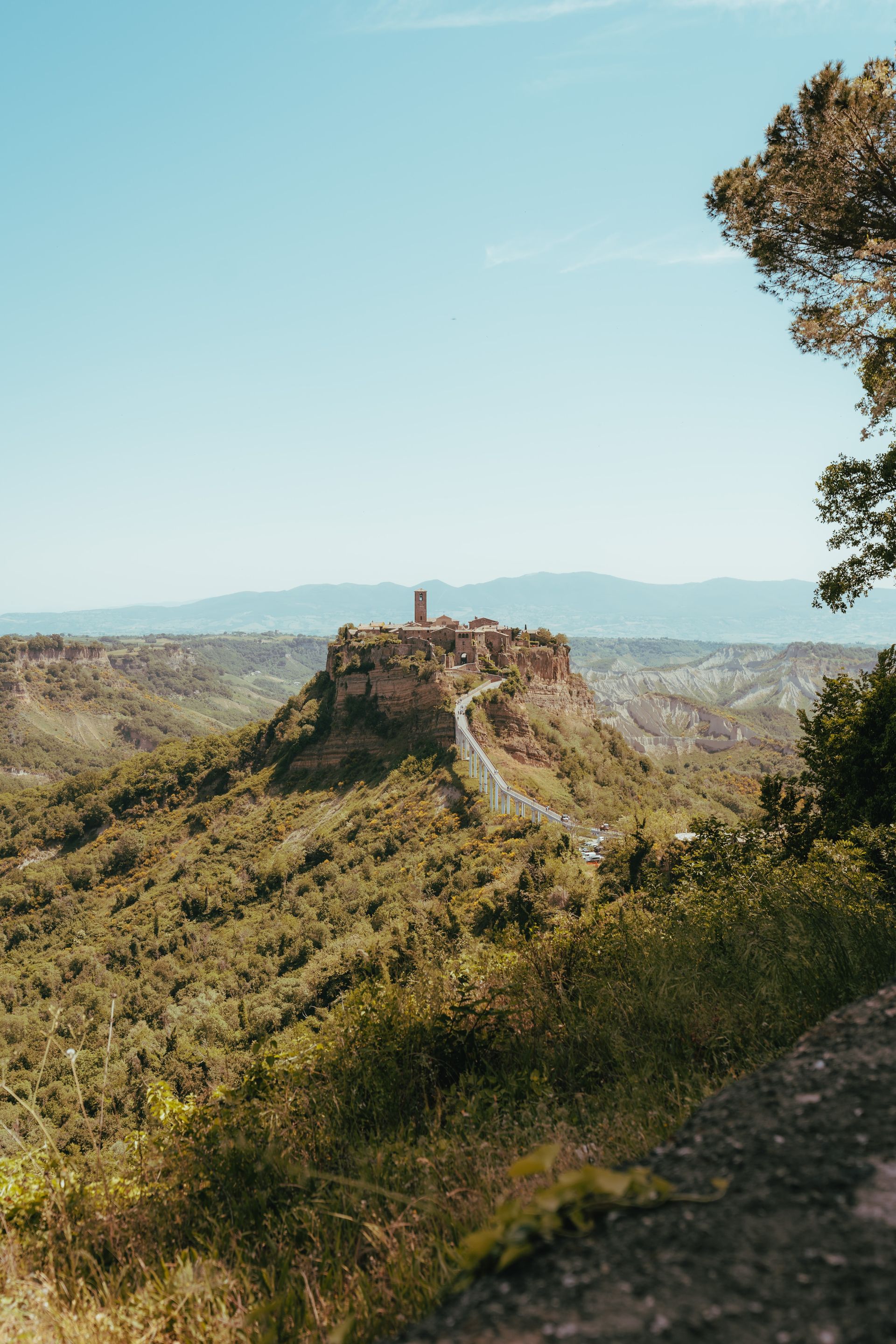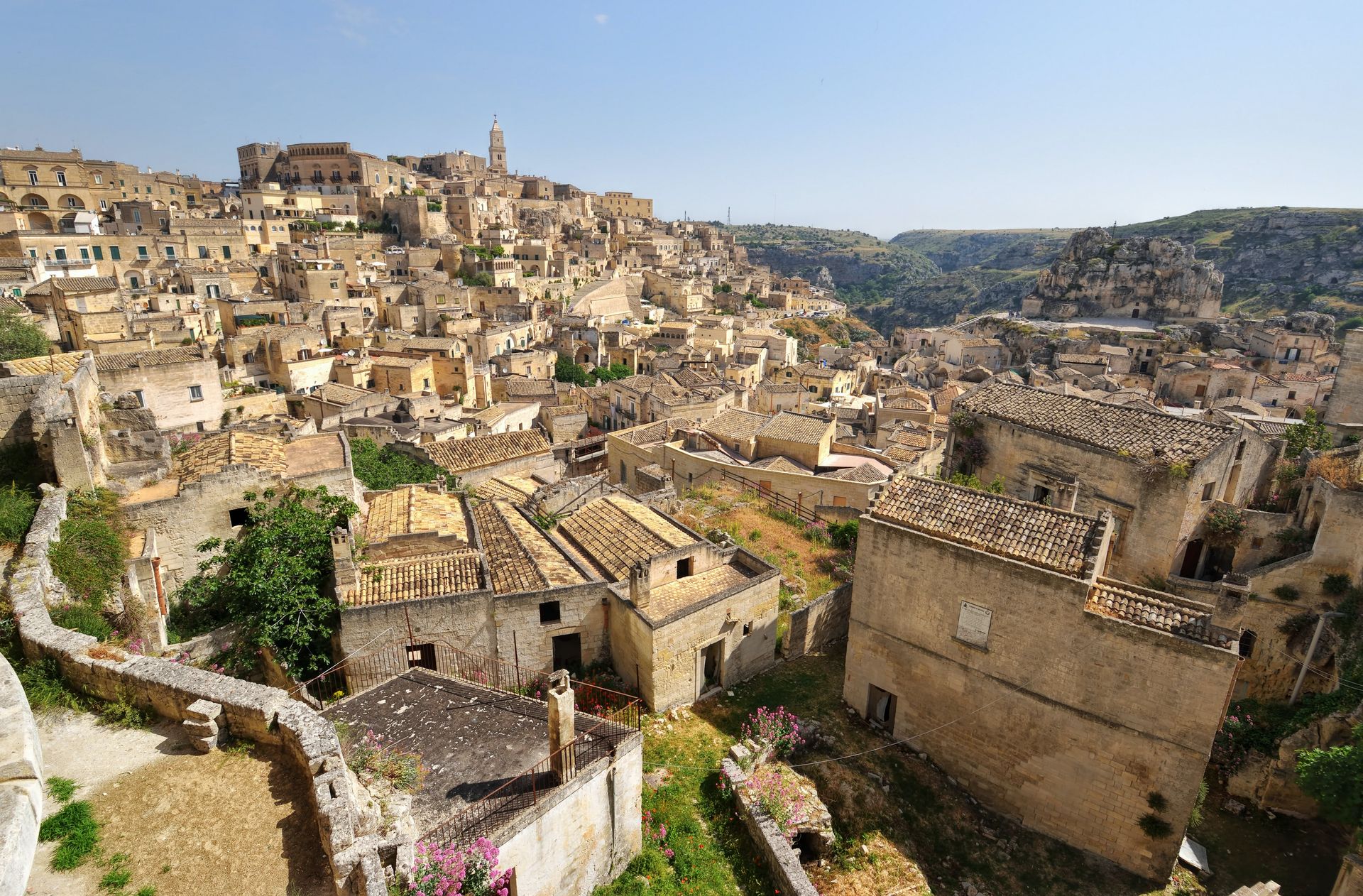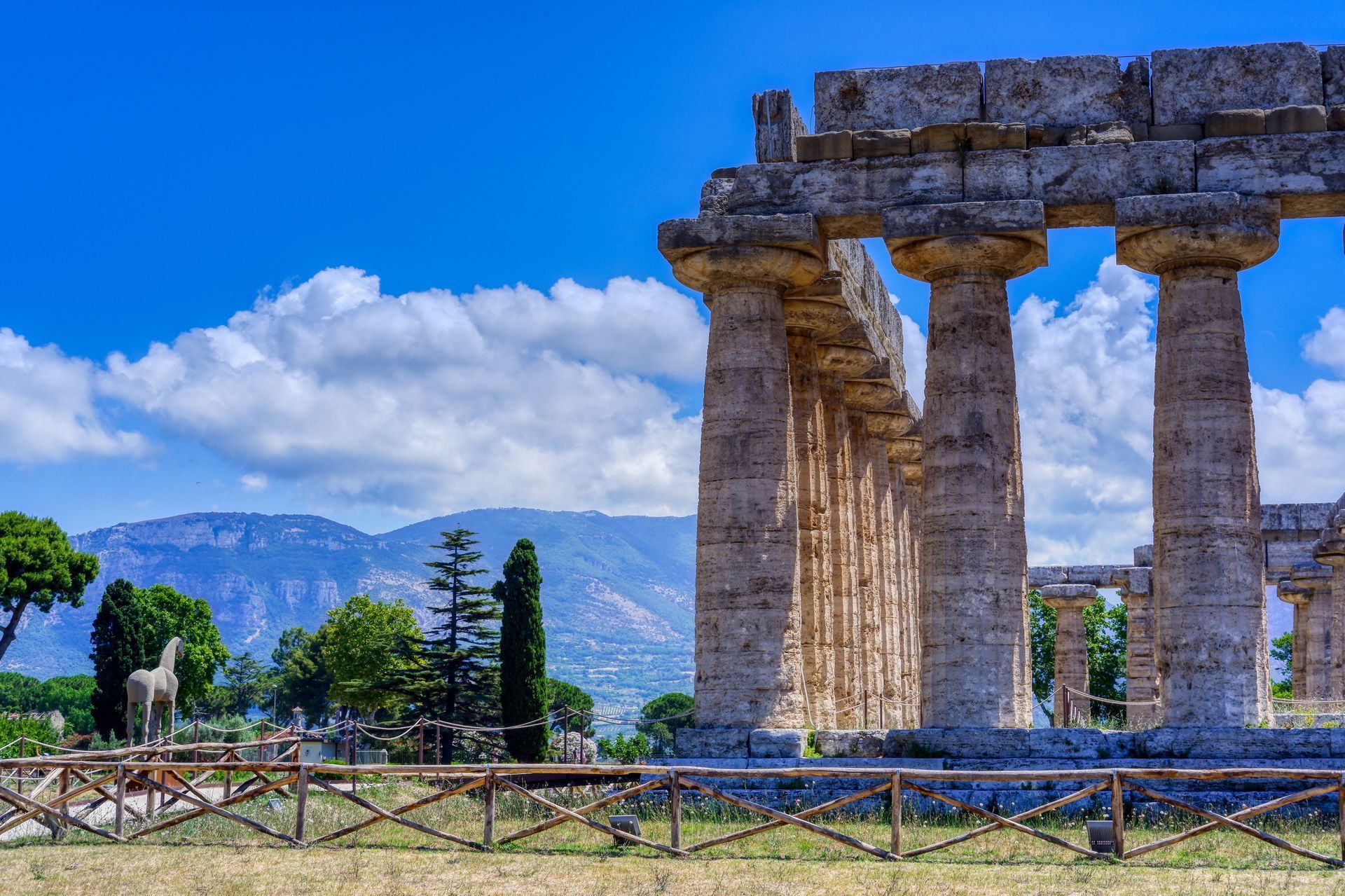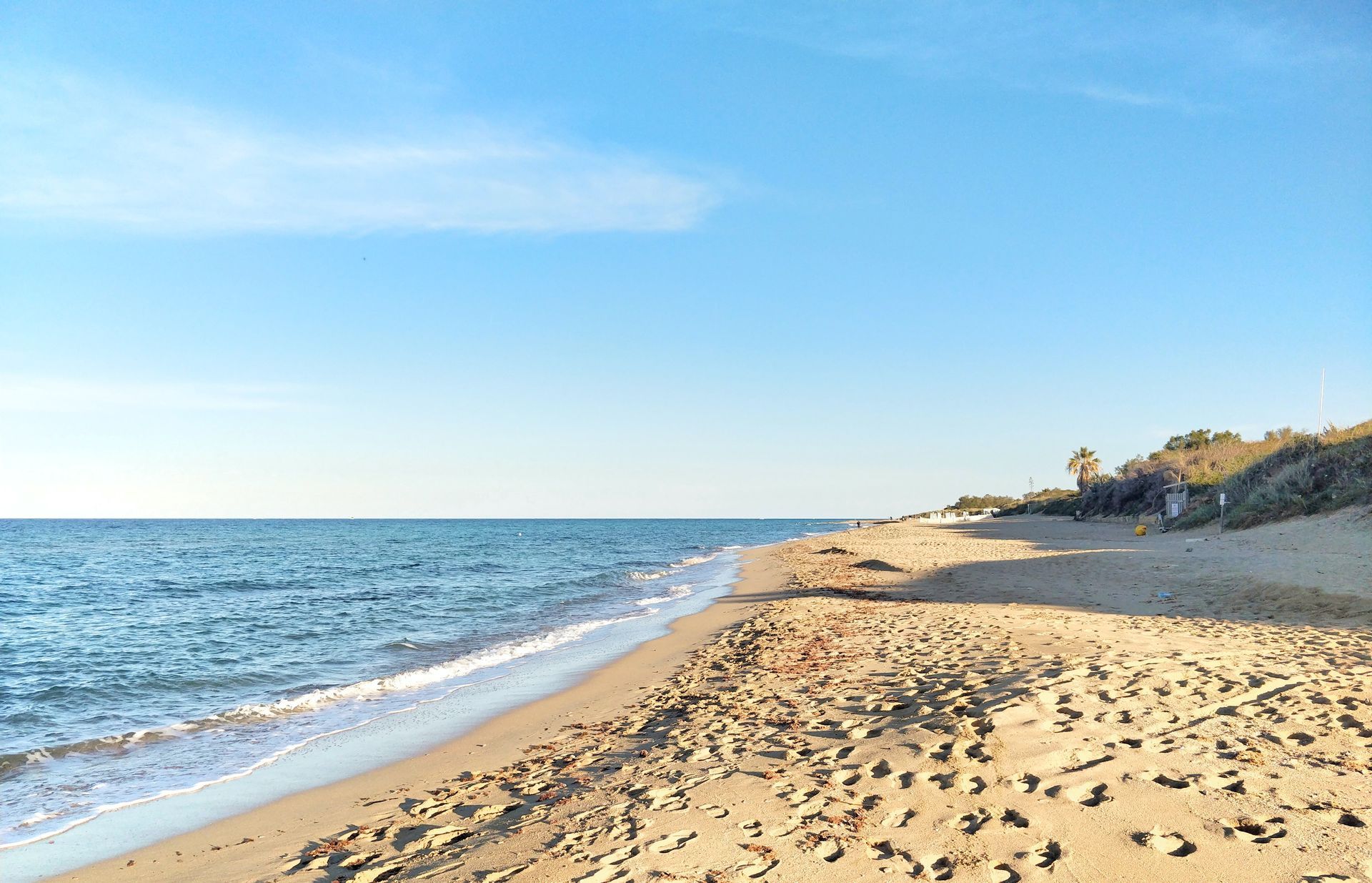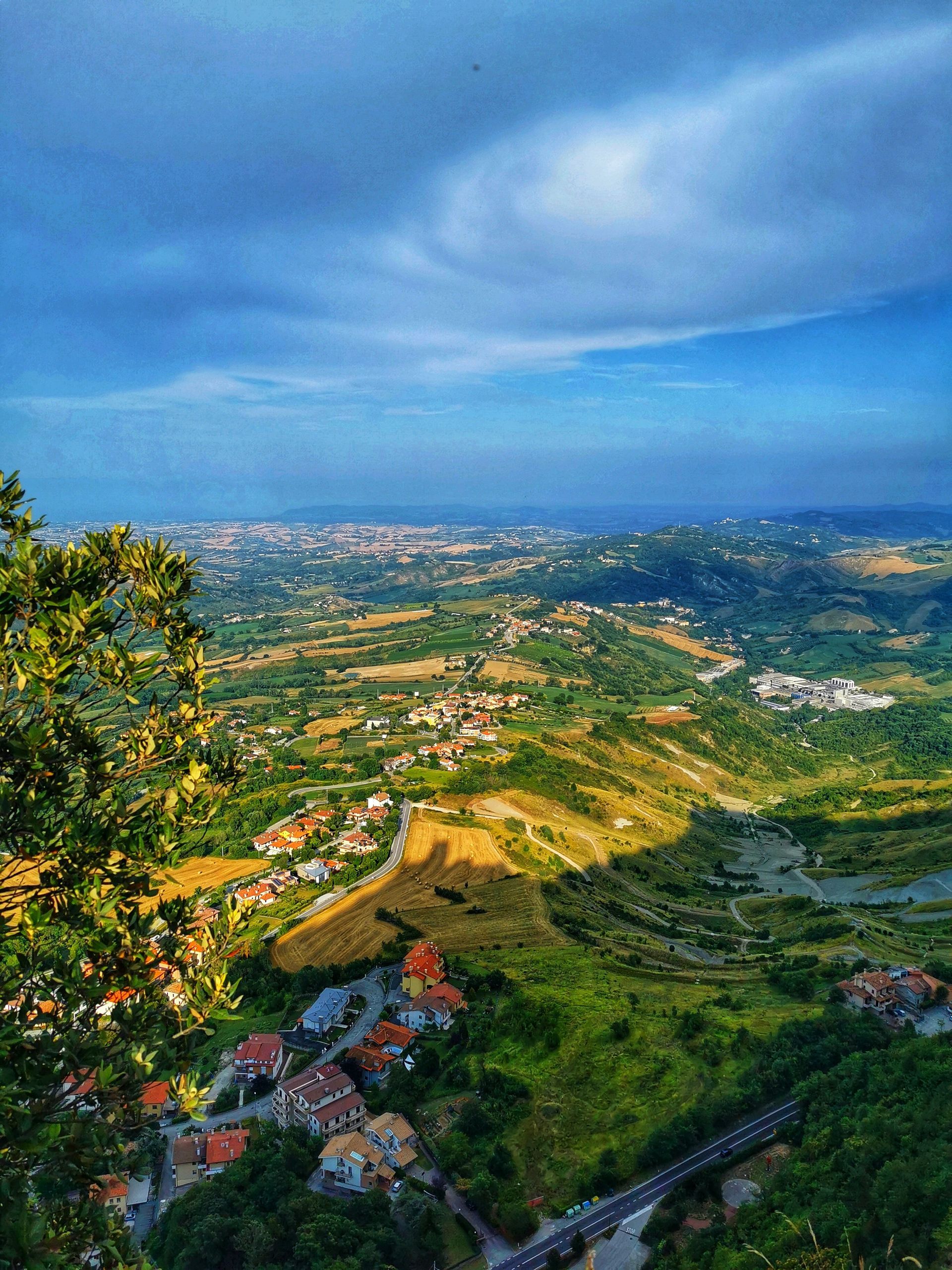Spreading Smile across the globe
Hidden Gems of Northern Italy
Hidden Gems of Italy are a testament to the country's diverse and enchanting beauty, often concealed from the traditional tourist routes. While Italy is celebrated for its iconic cities like Rome, Florence, Venice, and the Amalfi and Cinque Terre coasts, it's the lesser-known destinations that promise a unique journey. These unexplored regions offer travellers a chance to experience Italy's authentic culinary delights, rich historical narratives, and stunning natural landscapes. From the northern reaches to the southern shores, these Hidden Gems of Italy reveal a different facet of this remarkable nation.
Lake Orta - Piedmont
Hidden Gems of Italy come to life at Lake Orta, tucked away near the Swiss border in the heart of Piedmont. This hidden paradise often evades the spotlight compared to its more famous counterparts like Lake Como and Lake Garda. The historic town of Orta San Giulio, with its Baroque and Medieval architecture, cobbled streets, and idyllic Piazza Motta, enchants visitors. The glistening waters of the lake itself invite moments of serenity. What makes Lake Orta truly extraordinary is the mysterious island at its centre—a tranquil sanctuary inhabited by resident nuns.
Treviso - Veneto
Among the Hidden Gems of Italy, Treviso stands as a city in the Veneto region that retains its genuine northern Italian charm. Meandering through its narrow cobbled lanes, picturesque canals, and medieval city walls feels like a step back. Positioned on the fringes of the renowned Prosecco wine region, Treviso provides a delightful excuse for an aperitivo with a glass of Italy's renowned sparkling Prosecco.
Aosta Valley
Nestled among the bordering landscapes of Switzerland and France, the Aosta Valley showcases breathtaking alpine scenery, perched castles, and traditions that thrive throughout the year. When spring and summer arrive, the region's walking trails entice explorers. This season also brings lively festivals that celebrate folk traditions that date back to medieval times. Be sure to savour the local cheese Fontina, a culinary delight that embodies the spirit of this Hidden Gem of Italy.
Alba - Piedmont
Alba, a sought-after destination among Italy's hidden gems, is situated in the vineyards of the Langhe Hills. Once adorned with a hundred towers, Alba exudes a charming rural ambience. It's renowned for its autumn truffle festival, a gastronomic event that captures the essence of the region. Alba is also celebrated for its dark chocolate, hazelnut groves, white truffles, and prestigious wineries. It's from this very region that the sought-after Barolo wine originates.
Camogli - Liguria
Camogli, a typical and vibrant Italian seaside village on the Ligurian Riviera di Levante, perfectly embodies the spirit of the Hidden Gems of Italy. Towering, brightly painted houses dominate the town, and it has become a magnet for visitors seeking pristine beaches, Ligurian cuisine, the rustic fishing marina, Italian culture, and a tranquil natural setting. Camogli has earned its reputation for culinary excellence, focusing on fish and seafood, particularly anchovies and tuna, as well as the iconic pesto sauce made from basil and pine nuts.
Brescia - Lombardy
Hidden Gems of Italy often come alive through history, and Brescia is no exception. In this small city, history unfolds through a tapestry of architectural styles, spanning Roman, Medieval, Renaissance, Baroque, and even Art Deco. Walking through Brescia feels like a journey through time, and a visit to the captivating Piazza della Loggia, framed by a stunning Venetian-style palace at its heart, is a must for history enthusiasts.
Trieste
Trieste is a refreshingly unique destination, an Italian city positioned near the Slovenian border with its dialect that's a delightful blend of Austrian-German, Greek, Croatian, and Italian. Trieste's neoclassical waterfront is a sight to behold, with its marina brimming with stylish, glimmering yachts. The city's offerings include clear blue skies, expansive sandy beaches, city lidos, and the surrounding vineyards. Trieste is a Hidden Gem of Italy that belongs on every traveller's Northern Italian itinerary.
Modena - Emilia-Romagna
Modena is famed for its Hidden Gems of Italy, including balsamic vinegar, Luciano Pavarotti, the Romanesque cathedral, and the nearby Ferrari museum. Beyond these illustrious attractions, Modena reveals a treasure trove of remarkable restaurants. Massimo Bottura's Osteria Francescana has twice earned a place among the world's top 50 eateries, showcasing the culinary excellence of this Hidden Gem. While in Modena, don't miss the chance to savour local specialities like stuffed tortellini and sparkling Lambrusco wine, the perfect complement to your gastronomic journey.
Chiusa / Klausen - South Tyrol
Chiusa, also known as Klausen, is one of Italy's most picturesque villages. It is situated on the banks of the Isarco River in the South Tyrolean region near the Austrian border. Chestnut groves, green fields, vineyards, and farmsteads surround the town. In the village itself, visitors are captivated by narrow alleyways, coats of arms, large bay windows, crenellated facades, and the two main squares.
Ravenna - Emilia-Romagna
Ravenna offers a treasure trove of experiences among the Hidden Gems of Italy. This city is a feast for the senses, with its diverse offerings of food, music, art, culture, history, beaches, wine, and mosaics. Ravenna is home to eight UNESCO-listed sites, making it a must-visit for history and art enthusiasts. It's also known for its two-month-long music festival, Dante Alighieri's tomb, local culinary delights, nearby beach resorts, and the opportunity to explore pinewood forests. The city's fame is derived from its stunning mosaics, dating from the fifth and sixth centuries, scattered throughout the town.
In conclusion, Italy's Hidden Gems invite you to embark on a journey less travelled, where the rich tapestry of history, diverse cuisine, and breathtaking landscapes come to life. These lesser-known destinations provide an authentic Italian experience, away from the bustling crowds, revealing the nation's soul in its purest form. Explore these Hidden Gems to uncover Italy's hidden treasures.
Hidden Gems of Central Italy
Hidden Gems of Italy beckon the adventurous traveller to explore the lesser-known treasures that this remarkable country holds. From the picturesque valleys of Tuscany to the medieval charm of Umbria, the mysterious landscapes of Molise, and the architectural wonders of San Gimignano, these destinations promise unforgettable experiences.
Garfagnana - Tuscany
The Garfagnana region is a hidden gem in the beautiful Tuscan valley north of Lucca. It is crossed by the Serchio River, and the landscape is characterized by fertile greenery, rugged mountains, and charming villages. Outdoor activities such as hiking, walking, and mountain biking are enjoyed by many people in this area. Garfagnana is home to several one-of-a-kind attractions, including a ghost town, a wind cave, and the Devil's Bridge at Borgo a Mozzano.
Gubbio - Umbria
Umbria hides many treasures, and a particular favourite among Hidden Gems of Italy is the Medieval hilltop town of Gubbio. Gubbio, a city with a history dating back over 2,000 years, is a maze of cobbled streets and stone buildings that have been perfectly preserved. Visitors can take a cable car to the summit of Mount Ingino to enjoy panoramic views of the surrounding area. In addition, Gubbio hosts Italy's oldest event, the Corsa dei Ceri, in which teams race through the streets carrying massive wooden candles.
Molise
Molise is Italy's second-smallest region and one of its best-kept secrets. Hidden Gems of Italy are plentiful here. The picturesque town of Agnone is renowned for its artisanal bells, produced by the oldest family-run bell foundry in the world. Meanwhile, Campobasso, the regional capital, boasts a stunning medieval old town. Molise offers a captivating mix of historical charm and natural beauty, with rugged mountains, rolling hills, and pristine beaches along the Adriatic coast.
San Gimignano - Tuscany
Nestled in the heart of Tuscany, San Gimignano boasts medieval architecture and, of course, its famous towers. The town's historic centre is a UNESCO World Heritage site, known for its fourteen stone towers that once symbolised wealth and power. San Gimignano offers a glimpse into medieval Tuscany, with well-preserved streets and squares that transport visitors to another time. Besides the towers, make sure to explore the Collegiate Church and indulge in the local Vernaccia wine, a crisp white wine produced in the region.
Spello - Umbria
Another gem in the heart of Italy, Spello enchants visitors with its winding medieval streets and stunning floral displays. Known as the "Città Infiorata" or "flower town," Spello hosts the Infiorata festival, during which the streets are carpeted with intricate flower petal designs. This event occurs in early June and is a magnificent spectacle. Outside of the festival, Spello's charm continues with its well-preserved historic centre and beautiful churches.
Trulli of Alberobello - Apulia
Apulia, or Puglia, is famous for its unique trulli houses, and Alberobello is the epicentre of this architectural marvel. These whitewashed conical homes are a UNESCO World Heritage Site that offers a glimpse into the region's history. Visitors can even stay in trulli that have been converted into accommodations, providing a truly immersive experience.
Norcia - Umbria
Nestled in the Sibillini Mountains, Norcia is renowned for its gastronomy. This charming town produces exceptional cured meats, particularly prosciutto and salami. For food enthusiasts, Norcia is a true Hidden Gem of Italy. Explore local shops, taste the region's specialities, and visit the beautiful town square. Nature enthusiasts will also find hiking trails and natural beauty in the nearby Monti Sibillini National Park.
Montefalco - Umbria
Montefalco is often called the "Balcony of Umbria" for its stunning views over the surrounding valley. This charming town is also known for its wine, particularly Sagrantino, one of Italy's most robust red wines. Montefalco's medieval centre is picturesque and hosts several churches with remarkable frescoes, making it a cultural and gastronomic gem.
Castelluccio di Norcia - Umbria
High in the Sibillini Mountains, Castelluccio di Norcia is a quaint village known for its stunning wildflower blooms in late spring and early summer. The surrounding plateau becomes a colourful tapestry, attracting photographers and nature enthusiasts. Besides the flowers, visitors can enjoy hiking and take in the breathtaking scenery. Hidden Gems of Italy like Castelluccio di Norcia provide a unique connection to nature and the changing seasons.
In the heart of Italy, a treasury of Hidden Gems awaits the intrepid traveller. From the mysterious ghost town of Garfagnana to the ancient charms of Gubbio, the enchanting landscapes of Molise, and the medieval splendours of San Gimignano, these lesser-known destinations reveal Italy's diverse beauty and rich history. Journey through the tranquil streets of Spello, marvel at the unique trulli houses in Alberobello, savour the culinary delights of Norcia, and bask in the vibrant blooms of Castelluccio di Norcia. These Hidden Gems of Italy promise an unforgettable adventure in a land of timeless wonder.
Hidden Gems of Southern Italy
Italy, a land of rich history, captivating art, and exquisite cuisine, is known for its iconic cities and world-famous landmarks. Despite the tourist-filled streets and crowded piazzas, the country holds many hidden gems—lesser-known destinations that offer a more intimate and authentic experience. These places, tucked away in various corners of Italy, are a testament to the nation's diverse and enchanting beauty, waiting to be explored by the discerning traveller. From medieval towns perched atop hills to charming coastal villages and ancient archaeological sites, the Hidden Gems of Italy promise unique adventures and unforgettable memories.
Civita di Bagnoregio - Lazio
Civita di Bagnoregio is often called the "Dying Town" because of its gradual erosion over the centuries. This medieval village is perched on a hilltop and can only be reached by a long footbridge. It's a unique destination, seemingly suspended in time, and is the perfect Hidden Gem for history buffs and photographers.
Matera - Basilicata
Matera, known for its cave dwellings, is one of Italy's most intriguing and unique destinations. The Sassi di Matera, a historic cave settlement, is a UNESCO World Heritage Site. Matera is gaining popularity but still qualifies as one of the Hidden Gems of Italy. Touring this labyrinth of stone-carved rooms and narrow streets offers an incredible historical journey.
Sperlonga - Lazio
Sperlonga is a charming coastal town characterized by its pristine beaches, winding alleys, and picturesque piazzas. Nestled between Rome and Naples, Sperlonga is often overlooked by travellers. A visit here reveals a relaxed and authentic Italian atmosphere, perfect for strolls and seaside relaxation. Take advantage of the Grotto of Tiberius, a cave once used as the emperor's villa and now a museum.
Paestum - Campania
The ancient ruins of Paestum, originally a Greek colony known as Poseidonia, provide an extraordinary window into Italy's history. The temples are exceptionally well-preserved, ranking among the best-preserved in the world. Paestum is also home to a fascinating archaeological museum that displays artefacts from the site. Enjoy a step back in time amid the Hidden Gems of Italy.
Castro - Apulia
Castro, a picturesque coastal town, boasts a historic centre perched on a rocky outcrop. Visitors can explore ancient churches, fortifications, and a charming harbour. Castro also has sea caves that can be explored by boat. The region's cuisine is a seafood lover's paradise, making this town a Hidden Gem for food enthusiasts as well.
Scilla - Calabria
Scilla, an idyllic coastal village in Calabria, offers stunning sea views and hidden beaches. The town is known for the Ruffo Castle, which dominates the landscape, and the legendary sea monster Scylla from Greek mythology. The charming village is a serene and lesser-known alternative to some of the more crowded Italian seaside destinations.
San Marino
San Marino is a microstate surrounded by Italy and is one of the world's oldest republics. It's a destination that's often missed, making it a true Hidden Gem. San Marino boasts dramatic mountaintop views, historic architecture, and unique attractions like the Guaita Tower and the Palazzo Pubblico. For collectors, the country is also known for its beautiful stamps and coins.
Conclusion
Discovering the Allure of Hidden Gems of Italy
Hidden Gems of Italy offers travellers an authentic experience, far removed from the tourist-packed cities and famous landmarks. These lesser-known destinations unravel the genuine charm, culture, history, and culinary wonders that make Italy an endlessly fascinating country to explore. From the mountains of the North to the coasts of the South, each region holds its treasures, waiting to be discovered by those who venture off the beaten path. By exploring the Hidden Gems of Italy, you can craft a unique and unforgettable journey that deepens your appreciation of this incredible country. Plan your trip carefully, and you will be rewarded with the beauty, history, and flavours that characterize these enchanting places.
Culinary Adventures:
Sampling Italy's Regional Cuisine
Embarking on a culinary adventure through Italy is a journey into the heart of diverse flavours, each region boasting its gastronomic treasures that tell the story of centuries-old traditions and local ingredients. Italy's regional cuisine is a symphony of tastes, a celebration of terroir, and a testament to the country's rich culinary heritage.
In the rolling hills of Tuscany, one discovers the simplicity of Tuscan cuisine — robust olive oils, succulent Chianina beef, and the delicate balance of flavours in ribollita soup. Head south to Naples, where the aroma of wood-fired pizza wafts through the air, a testament to the city's culinary prowess.
Sicily, with its unique blend of Arab, Greek, and Norman influences, offers a tapestry of flavours. From arancini to cannoli, each bite tells a story of the island's vibrant history. In the north, the aromatic truffles of Piedmont and the delicate pasta of Emilia-Romagna showcase the elegance of regional specialities.
Sampling Italy's regional cuisine is not just a culinary experience; it's a cultural immersion. From the seafood-rich dishes of Liguria to the bold flavours of Sicilian street food, each region paints a distinctive culinary portrait. Exploring Italy's diverse flavours is a journey of the senses, where every bite is a step deeper into the soul of a nation that cherishes its culinary heritage as much as its art and history.
Regional food of Abruzzo: Arrosticini Abruzzesi
Nestled between the Apennines and the Adriatic, Abruzzo reveals a culinary gem that embodies the essence of Italy's regional cuisine — Arrosticini Abruzzesi. These small, succulent skewers of lamb, expertly grilled to perfection, are more than just a dish; they are a cultural emblem of this rugged and enchanting region.
The heart of Arrosticini lies in the simplicity of its preparation. Cubes of tender lamb, seasoned with just salt and sometimes a hint of rosemary, are threaded onto skewers and grilled over an open flame. The result is a culinary masterpiece, where the smoky aroma mingles with the rich, savoury flavour of the lamb, creating a sensory experience that mirrors the rustic beauty of Abruzzo itself.
Often enjoyed in the company of friends and family during outdoor gatherings, Arrosticini epitomises the warmth and conviviality of Abruzzese culture. Pairing perfectly with local wines, these skewers transport diners to the sun-kissed hills and picturesque villages that define the region.
In savouring Arrosticini Abruzzesi, one not only tastes the exquisite flavours of locally sourced lamb but also becomes part of a tradition that has been cherished for generations. This dish is a testament to the deep connection between Abruzzo's culinary heritage and the untamed beauty of its landscapes, encapsulating the spirit of Italy's regional cuisine.
Regional food of Aosta Valley: Polenta with stew
Nestled in the alpine embrace of the Aosta Valley, the regional cuisine unfolds like a comforting tale, with Polenta and Stew taking centre stage. This traditional dish, born from the region's rustic charm and hearty mountain fare, is a culinary masterpiece that warms both body and soul.
The cornerstone of this dish is the golden polenta, a maize-based marvel cooked to creamy perfection. Paired with a robust stew made from locally sourced meats, aromatic herbs, and mountain vegetables, the flavours meld into a symphony of earthy richness.
As one indulges in a spoonful, the dish narrates a story of resilience and sustenance against the backdrop of snow-capped peaks. It reflects the deep connection between the people of Aosta Valley and their natural surroundings.
This culinary journey is a sensory exploration of Italy's regional cuisine, where the simplicity of ingredients transforms into a gastronomic experience. The Polenta with Stew not only satisfies hunger but also serves as a delicious reminder that the Aosta Valley's cuisine is a reflection of its alpine spirit and the enduring traditions that have shaped this breathtaking corner of Italy.
Regional food of Apulia: Friselle Pugliesi and Orecchiette with Cime di Rapa
In the sun-kissed embrace of Apulia, the regional cuisine paints a gastronomic masterpiece, harmonizing the rustic crunch of Friselle Pugliesi with the heartiness of Orecchiette and Cime di Rapa. This culinary pairing encapsulates the essence of Italy's regional cuisine, where simple ingredients yield extraordinary flavours.
Friselle Pugliesi, with its satisfying crunch, serves as the canvas for the bold flavours of the region. Soaked, drizzled with local olive oil, and adorned with ripe tomatoes, they embody Apulia's agricultural abundance and culinary creativity.
Complementing this, Orecchiette pasta, resembling small ears, cradles the vibrant goodness of Cime di Rapa. This classic dish, enriched with garlic, chilli, and a sprinkle of pecorino, is a testament to Apulia's love affair with fresh, local produce.
As you savour Friselle Pugliesi and Orecchiette with Cime di Rapa, each bite becomes a journey through Apulia's sun-drenched landscapes, where the Mediterranean breeze carries the essence of the land. Italy's regional cuisine, in this harmonious blend, invites you to experience the authenticity and rich flavours that define Apulia's culinary heritage.
Regional food of Basilicata: Luganega sausage and Lasagna with chickpeas
In the heartland of Basilicata, the regional cuisine unfolds like a cherished story, and two culinary stars take the spotlight: Luganega sausage and Lasagna with chickpeas. This gastronomic pairing is a testament to the region's dedication to simple, honest ingredients and the time-honoured traditions that define Italy's regional cuisine.
Luganega sausage, with its aromatic blend of pork, pepper, and fennel, is a culinary gem that mirrors the flavours of the lush landscapes. The art of crafting this sausage is a culinary heritage passed down through generations, a testament to Basilicata's commitment to preserving its authentic tastes.
Complementing the savoury richness of Luganega, Lasagna with chickpeas brings a comforting embrace to the table. Layered pasta sheets enveloped in a velvety chickpea sauce create a symphony of textures and tastes that echo the agricultural bounty of Basilicata.
As you savour Luganega sausage and Lasagna with chickpeas, you embark on a journey through the sun-drenched fields and quaint villages of Basilicata, where each bite tells a tale of resilience, tradition, and the soulful connection between the land and its culinary treasures. Italy's regional cuisine, through these flavorful ambassadors, beckons you to partake in the authentic and time-honoured flavours of Basilicata.
Regional food of Campania: Pizza Napoletana and Gnocchi alla Sorrentina
In the sun-soaked landscapes of Campania, the regional cuisine dances between tradition and innovation, and two culinary delights take centre stage: Pizza Napoletana and Gnocchi alla Sorrentina. This gastronomic pairing encapsulates the essence of Italy's regional cuisine, where each dish is a celebration of local flavours and centuries-old culinary expertise.
Pizza Napoletana, with its perfectly blistered crust and simple yet flavorful toppings, is a symbol of Naples' culinary prowess. The art of crafting this iconic dish is a meticulous process that has been perfected over generations, embodying the rich history and passion of Campania.
Complementing the savoury allure of Pizza Napoletana, Gnocchi alla Sorrentina showcases the region's dedication to fresh, high-quality ingredients. Pillowy potato dumplings, bathed in a luscious tomato sauce and melted mozzarella, create a harmony of textures and flavours that speak to the coastal abundance of Sorrento.
As you savour Pizza Napoletana and Gnocchi alla Sorrentina, you embark on a sensory journey through the vibrant streets and azure waters of Campania, where the culinary legacy intertwines with the breathtaking landscapes. Italy's regional cuisine, through these iconic dishes, invites you to experience the heart and soul of Campania's rich gastronomic tapestry.
Regional food of Emilia-Romagna: Lasagna and Mortadella
In the heart of Emilia-Romagna, the regional cuisine unfolds as a love letter to culinary artistry, featuring the timeless duo of Lasagna and Mortadella. This gastronomic pairing epitomizes Italy's regional cuisine, where the meticulous craft of each dish reflects the region's commitment to excellence.
Lasagna, with its delicate layers of pasta, velvety béchamel, rich ragù, and Parmesan, is a culinary masterpiece that embodies the warmth and tradition of Emilia-Romagna. Each bite is a journey through the rolling hills and fertile plains of the region, where agriculture and culinary expertise converge.
Complementing the grandeur of Lasagna is Mortadella, a delicacy that stands as a symbol of Emilia-Romagna's gastronomic heritage. Crafted with precision, this smooth and flavorful sausage reflects the region's dedication to using the finest ingredients and traditional methods.
As you savour the symphony of flavours in Lasagna and the delicate taste of Mortadella, you are transported to the heart of Emilia-Romagna, where culinary excellence is a way of life. Italy's regional cuisine, through these culinary treasures, invites you to indulge in the rich tapestry of flavours that define this enchanting region.
Regional food of Lazio: Coda alla vaccinara and Carbonara Pasta
In the heart of Lazio, Italy's regional cuisine unfolds as a captivating tale, weaving together the robust flavours of Coda alla Vaccinara and the timeless elegance of Carbonara pasta. This culinary duo encapsulates the essence of Lazio's gastronomic heritage, where centuries-old recipes meet modern indulgence.
Coda alla Vaccinara, a Roman oxtail stew, is a testament to the region's resourcefulness and commitment to using every part of the animal. Slow-cooked to perfection with tomatoes, celery, and a symphony of spices, it's a dish that pays homage to Lazio's rich culinary history.
On the other hand, Carbonara pasta, with its silky egg and pecorino cheese sauce adorned with pancetta, showcases the simplicity and sophistication for which Roman cuisine is renowned. Each twirl of pasta is a celebration of the region's dedication to quality ingredients and culinary finesse.
As you savour the hearty richness of Coda alla Vaccinara and the creamy perfection of Carbonara, you embark on a culinary journey through the cobbled streets of Rome, where every bite tells a story of tradition, innovation, and the timeless allure of Lazio's regional cuisine.
Regional food of Lombardy: Ossobuco and Risotto alla Milanese
In the picturesque landscapes of Lombardy, the regional cuisine unfolds as a culinary symphony, with Ossobuco and Risotto alla Milanese taking centre stage. This dynamic pairing epitomizes Italy's regional cuisine, where tradition and innovation converge to create flavours that stand the test of time.
Ossobuco, a hearty Milanese dish, features braised veal shanks enveloped in a rich, savoury sauce infused with wine, broth, and a medley of aromatic herbs. The tender meat falls off the bone, showcasing the region's commitment to slow-cooking and elevating simple ingredients into a gastronomic masterpiece.
Complementing the robustness of Ossobuco is Risotto alla Milanese, a luxurious saffron-infused rice dish. Each grain of Arborio rice is meticulously stirred to creamy perfection, creating a bed for the vibrant golden hues of saffron and the buttery richness of Parmesan. This iconic risotto is a testament to Lombardy's dedication to creating dishes that are as visually stunning as they are indulgently delicious.
As you savour the nuanced flavours of Ossobuco and Risotto alla Milanese, you're transported to the heart of Lombardy, where culinary excellence is a time-honoured tradition. Italy's regional cuisine, through this culinary pair, invites you to experience the warmth, elegance, and timeless allure of Lombardy's gastronomic tapestry.
Conclusion:
Italy's regional cuisine is a tapestry woven with threads of tradition, innovation, and the timeless allure of local flavours. Each region unfolds a unique culinary story, inviting discerning palates to embark on a sensory journey through diverse landscapes and centuries-old traditions.
From the robust flavours of Ossobuco in Lombardy to the delicate layers of Lasagna in Emilia-Romagna, every dish tells a tale of culinary craftsmanship passed down through generations. The gastronomic pairings, like Coda alla Vaccinara and Carbonara pasta in Lazio or Pizza Napoletana and Gnocchi alla Sorrentina in Campania, showcase the depth of regional pride and dedication to quality ingredients.
As you indulge in the rich symphony of tastes, you traverse the sun-soaked fields of Basilicata, the charming streets of Lombardy, and the azure waters of Campania. Italy's regional cuisine, through its culinary treasures, beckons you to savour the authenticity, warmth, and diversity that define each region. It's an invitation to explore the heart and soul of Italy, one delectable bite at a time, and immerse yourself in the culinary heritage that makes each region a unique and cherished destination for food enthusiasts worldwide.
Things To Do | Travel Information | Local's Favourites




